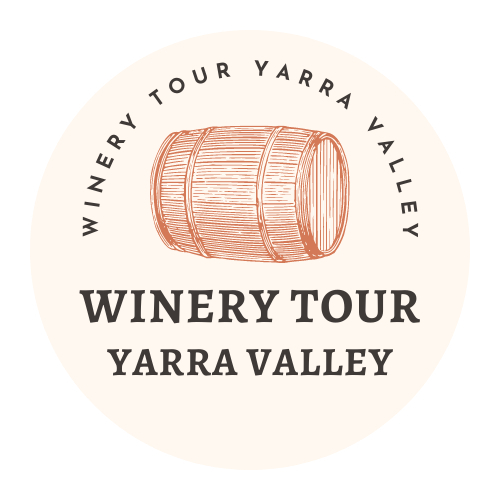The Benedictine monk Dom Perignon said when he sampled the initial results of his innovative winemaking method, “Come quickly, I’m tasting stars!” Contrary to common perception, Dom Perignon did not create champagne, although he did make significant improvements to its manufacture while serving as cellar master at the Benedictine abbey in Hautvillers. And the star-shaped garden that adorns Domaine Chandon’s drive honors his renowned proverb.
The highlight of our AWTC day tour is Domaine Chandon, which contrasts sharply with Yering Farm’s charmingly rural atmosphere. The farmhouse that Domaine Chandon acquired when they purchased the estate at Green Point that today makes up Domaine Chandon was meticulously repaired, in contrast to Yering Farm who have carefully preserved their cellar entrance as it was in 1950. French champagne producers Moet et Chandon made a risky marketing choice that led to the establishment of the winery. The Yarra Valley’s climate and soil attributes largely supported it being placed next on their list of potential locations after joint ventures were previously established in South America and California. They bought the dairy farm Green Valley in the middle of the 1980s. It turned out to be a champagne maker’s dream, and they started creating Moet & Chandon, Dom Perignon, Krug, Ruinart, and Veuve Cliquot champagnes on the property, turning it into the powerhouse it is today.
Acres of champagne-making machinery, sophisticated dining areas, a tasting bar, and a store selling a variety of gourmet goods have all been added to the farmhouse. However, let’s get to the point: we are there to learn. Spud, our dependable driver and on-call wine taster, gave us a brief overview of the methode champenoise.
To the uninitiated, it may seem strange that pinot grapes are often used to make champagne. The color is lost since the skins are discarded. The second fermentation is the method’s key component. After the initial fermentation is finished, the bottle is recapped with a pressure cap after a tiny amount of sugar and yeast is added. It takes a few years for the secondary fermentation to occur. Lees, a significant amount of sediment known to the winemaker, builds up at the bottom of the bottle during this period. The lees is transferred to the bottle neck using a laborious procedure called riddling. The bottle’s neck is now frozen, the cap is taken off, and the frozen plug, which contains the undesired sediment, is ejected by the pressure that has accumulated over the second fermentation. The last cork is quickly placed so that the majority of the carbon dioxide stays in the champagne.
All of this was revealed to us while touring the Domaine Chandon winemaking sheds, which were impressive buildings filled with stainless steel machinery and that Spud explained with the authority of an expert. These structures appeared to be more than capable of performing the wondrous feats that give Dom Perignon’s stars life.
When it came time to sample those stars, the aura of French refinement was further accentuated when we were led to the tasting bar and given a tour of the palate by a representative of Domaine Chandon. Our champagnes were accompanied with some of the most delectable amuses bouches your correspondent has ever tasted at the tasting bar, which is located next to the Domaine’s kitchens.
The dining hall’s enormous picture window, which overlooks the vines, is Domaine Chandon’s crowning architectural achievement, which is inspired by the domed roofs of historic winemakers’ structures.
And as we take in the extraordinary ambiance of this amazing vintner, we do it while holding a glass in one hand and another enticing nibble in the other.
If you are in Southbank, Victoria 3006, and looking for a winery tour to Yarra Valley wineries or Mornington Peninsula wineries, this is the best way to visit us.
Winery Tour Yarra Valley
Unit 201/98 River Esplanade
Docklands, VIC 3008
(03) 7042 3201

